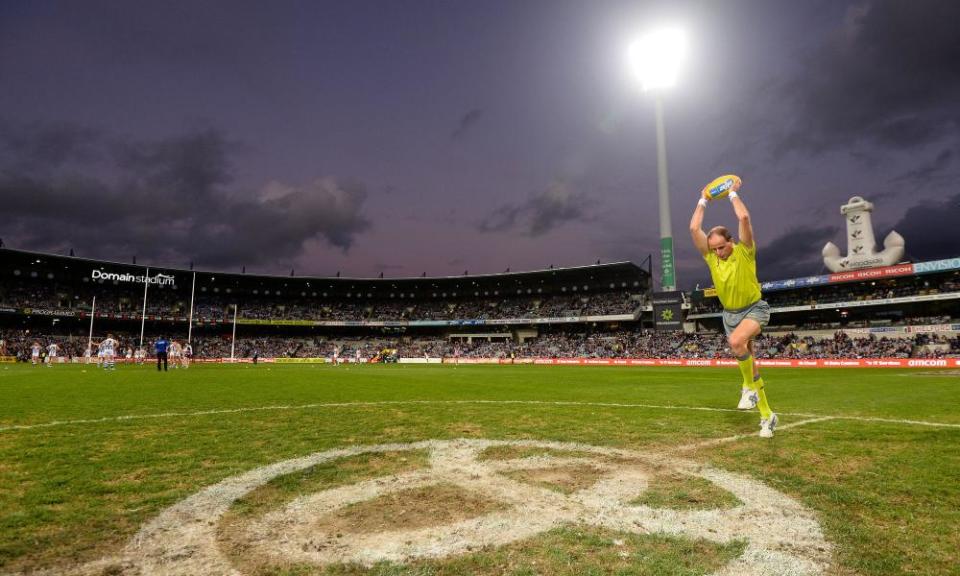'Here to stay': AFL commission vote to retain the centre bounce

The AFL commission has voted to retain the traditional centre bounce, despite increasing calls from umpires to have it scrapped. AFL chairman Richard Goyder and football operations manager Steve Hocking said the bounce was a “unique” and “iconic” part of the game, speculating that fans would be happy with the decision. Goyder also snuffed out any suggestion that the decision was a short-term one, adding emphatically: “the bounce is here to stay”.
Ray Chamberlain, who has umpired 264 games in 13 seasons, had been the umpires’ unofficial spokesperson on the issue, calling the bounce his “kryptonite” and claiming that colleagues had been treated with medication for anxiety because of the pressure of bouncing during matches. Eleni Glouftsis told Guardian Australia earlier this year that the bounce was causing umpires a number of physical problems, including shoulder reconstructions and back injuries. She said the original purpose of the bounce had been its unpredictability, whereas in recent times, umpires had been under increasing pressure to bounce straight and predictably.
The AFL’s umpires seemed privately confident of the league axing the bounce. Umpires’ Association CEO Peter Howe recently said it was only a matter of time until the AFL would eliminate it. He added that if the bounce remained, “we would need to chat with the AFL about the impact on the health and wellbeing of umpires”.
On Tuesday, however, Hocking made clear that bouncing was a requirement of an umpire’s job. “From our point of view, if you want to be an AFL umpire, this is part of being an AFL umpire... if you’re going to find your way through you need to practice that,” he said.
Umpires throw the ball up at stoppages, a rule that was introduced in 2013, but will continue to be required to perform centre bounces. Hocking said the AFL would, however, support umpires through the change.
“If people are wondering how important the umpires are from my point of view, their particular department is the 19th team of the competition. They need further support and on-going care and I’m absolutely committed, as is the organisation [to providing that].”
Earlier on Tuesday, Gillon McLachlan made headlines by suggesting that a mid-year trade period would create a more equal competition. “I would like to see it,” he said. “It’s one of the only times where you have the weaker clubs, i.e. the club lower down the ladder, having more leverage in the trade.”
McLachlan said the concept made sense for clubs who were hit hard with unlucky injuries – and could help them make ground on the rest of the competition sooner. “It’s four, five or six years for a club to get in the position to be competing deep into the finals,” he said.
“You might get the wrong couple of injuries, and you need a player. [A mid-year trade period would provide] the ability to pick up a key defender or ruckman.”
McLachlan said people were averse to the idea because “there’s an emotive side to the trade, but there’s no difference to [it happening] at the end of the year”. He said players were generally resistant to moving clubs, but the trade period showed that there was an appetite for player movement.
“Players are incredibly loyal. We get to the end of the trade period and people are bemoaning the lack of trades and player movement. If anything, I think there needs to be more player movement.”
He added that it was clubs, rather than fans, who had been the most resistant to the concept. “No-one likes change generally,” he said. “Our clubs like it as little as anyone. [But] I think we’ll get there.”
The league is also currently considering the prospect of live trading of picks during the draft, likely to be introduced next year.

 Yahoo Sport
Yahoo Sport 





































